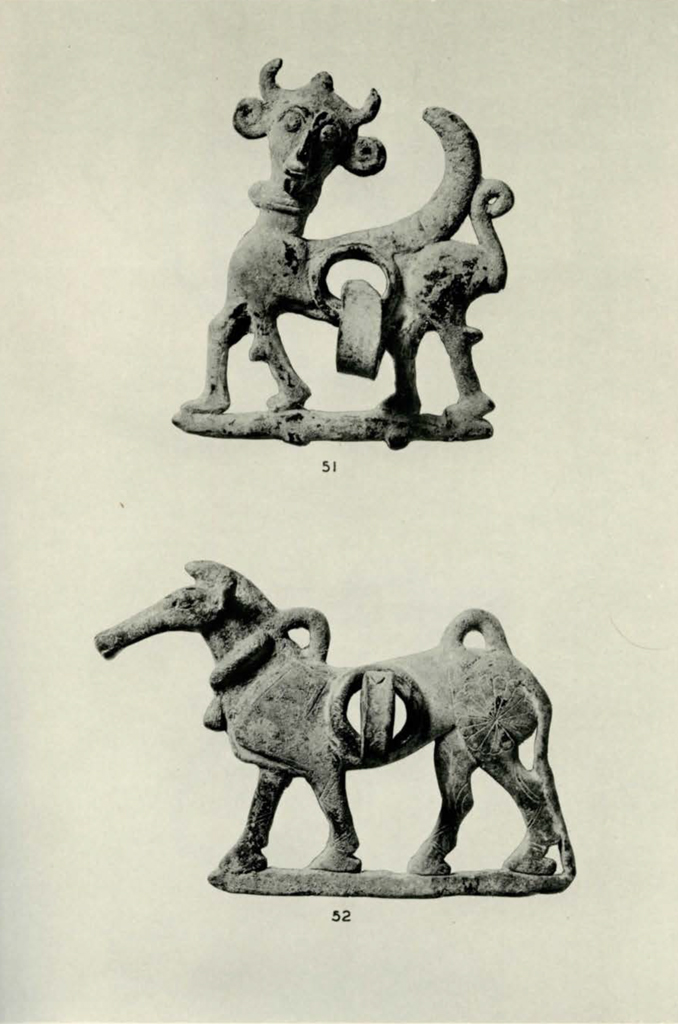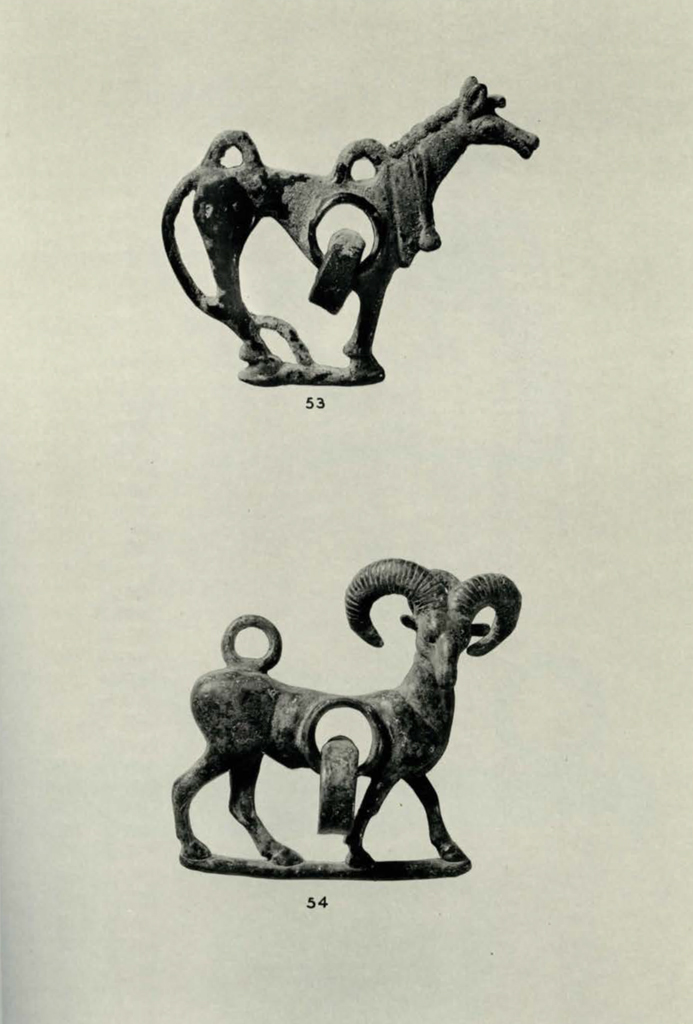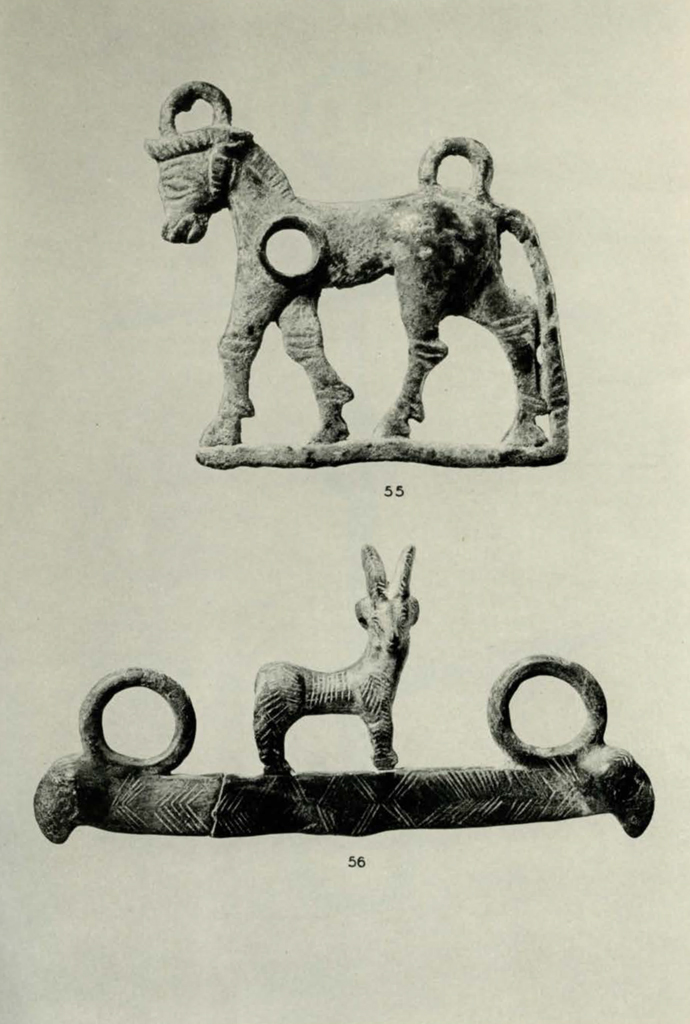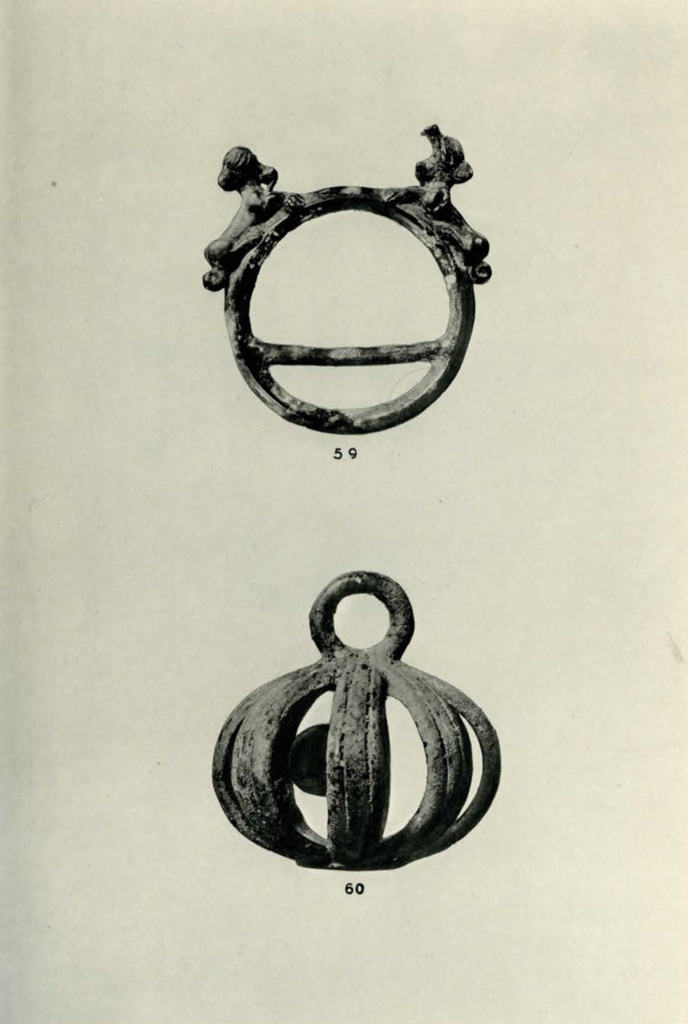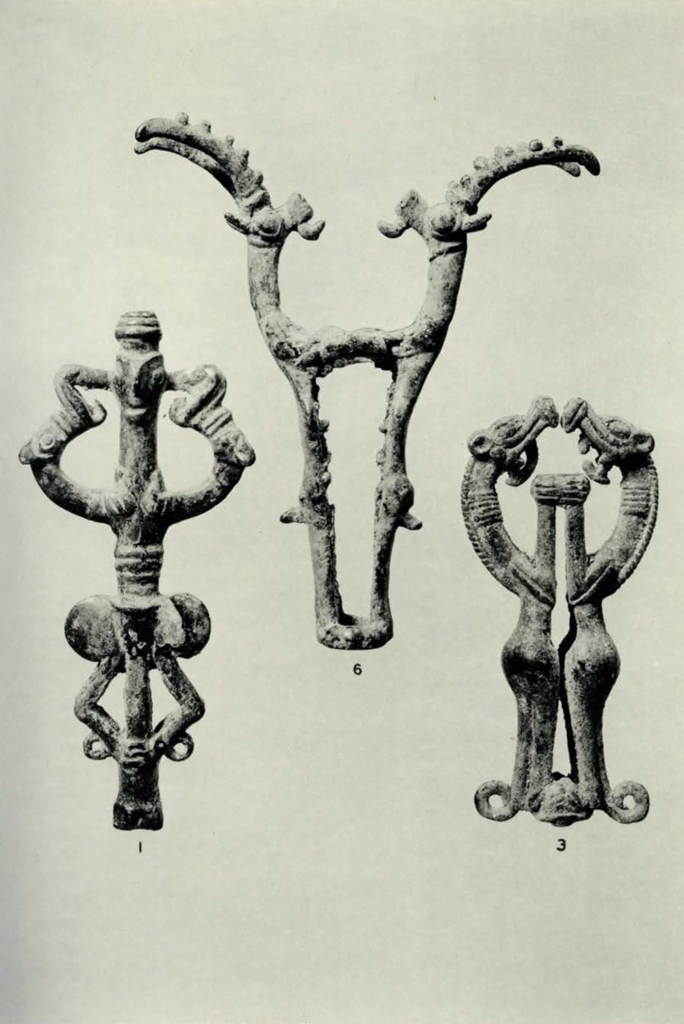
Museum Object Numbers: 30-38-1 / 30-38-58 / 30-38-2
Image Number: 21519-21524
- Bronze ornament, mascot—or idol—strongly stylized. A mythological hero stands between two dragons rampant which try to bite his long bull’s ears. Same relief on both faces. The motive is borrowed from the contests of Gilgamesh and Ea-bani with wild animals. But the interpretation is new and proper to the Luristan border land. The bodies of the animals join and melt into the central shaft, where they are girded by a triple belt. They leave the hind quarters in prominent, exaggerated relief, almost dismembered, which shows that the proportions of the figures are second to their decorative value, despite an effective rhythm, and finely modelled details. This rule applies to many of the Luristan bronzes. The legs are stiff, bent at an angle. The tails curl into a small ring between the feet. The claws are reduced to three lines on the necks, and perhaps a triple ring at the feet. An inner bronze tube driven through the central shaft of the mascot connected it with a bottle-shaped bronze base. In some cases a bronze pin driven into the tube from above reinforces the connection. The bottle-shaped bases have no bottom, and were perhaps mounted on a wooden shaft. These bronze ornaments buried at the head of the dead have been called idols with no good reasons. Their relation to horses and chariots is not clear. The lions, bulls and donkeys mascots on the rein rings of the Sumerian chariots is a distant parallel. (30-31-1.)’ 140 x 64 mm.
- Bronze mascot with the same relief on both faces. A mythological hero stands between two dragons rampant, and grips them by the neck. There is a triple crest on the dragons’ heads, and a triple belt around their joint bodies. Their bind quarters are disconnected from the legs. The tails curl into small rings above the claws. Small dragon’s heads protrude from the necks of the larger dragons, and two small weasel-like animals climb along their hind quarters. The style of the dragon’s heads is particular to the Luristan art and found in many examples. The gaping jaws, threatening fangs, round eyes and ears, open nostrils and hanging tongue are stereotyped and borrowed from the lion, the panther and the snake. This is a legendary animal. The hero has dropping bull’s ears, a short beard (?), a double necklace and a belt. His body is a shapeless trunk. His arms while expressing the traditional gesture, are too slender and out of proportion. The decorative and symbolic figure is the product of an art too refined, subtle and conventional. An inner tube connected the hollow shaft with the bottle-shaped base. (30-38-53.) 173 x 67 mm.
- Bronze mascot. Two dragons rampant with gaping mouth and hanging tongues, stand opposite each other. The usual hero is missing between them and was probably figured on the head of the pin driven between their front and rear claws. They wear a four-string collar. A short bristling mane runs along their necks. The relief is the same on both faces. The piece is not made of two soldered halves but cast in one operation. The details of jaws, ears and nostrils are particularly fine. (30-38-2.) 113 x 52 mm.
- Bronze mascot. Two rampant and winged dragons are facing each other. The figure is derived from a Babylonian original, but the elongated, distorted ornamental and elegant style is proper to Luristan. The inner tube passed through a ring between the front and rear paws. The round eyes, nostrils, jaws, ears, bristling mane, curled tails are as usual. The short curled wings are curiously attached above the tails, not on the shoulders, more as a symbol and a useful piece to reinforce the slender snake-like bodies. Same relief on both sides. (30-38-52.) 163 x 84 mm.
- Bronze mascot. Two dragons rampant, reduced to a head, neck, fore paws and curled tails, are biting the bull’s ears of a hero like the old Ea-bani. Himself is little more than a mask on the top of the hollow shaft, but his long lock, large eyes, nose, mouth, and beard are in keeping with the ancient tradition. His necklace may be simply another decorative ring on the shaft. Same relief on both faces. (30-38-29.) 97 x 55 mm.
- Bronze mascot. Two ibexes rampant. The hollow tube passed between their joint front and rear feet. The bodies are stylized, but the heads with short beard and pointed ear and their sword-like rugged horns are close to nature, and one of the masterpieces of the Luristan art. This animal is still found in the Persian hills, where it has always been a favorite game, and its graceful forms have been the inspiration of the local artists back in the days of the first painted Susa pottery. Same relief on both faces. (30-38-58.) 140x 123 mm.
- Bronze bottle-shaped base of a mascot. The bronze tube passing through the mascot was driven into the neck of the bottle which has no bottom and was probably mounted on a wooden shaft. (30-38-33.) 115 x 52 mm.
- Bronze bottle base of a mascot. The neck of the bottle is decorated with two masks of the hero with the bull’s ears. There is one ring round the shoulders, and three round the bottom of the base. (30-38-47.) 150 x 46 mm.
- Bronze bottle shaped base of elongated form, with rings round neck, shoulders and bottom of the perforated base. (30.38-34.) 190 x 28 mm.
- Bronze tube connecting mascot and base. (30.38-42.) 215 x 8 mm.
- Bronze tube. (30-38-43.) 192 x 6 mm.
- Bronze tube. (30-38-60.) 185 x 7 mm.
- Bronze pin. The head represents the mythological hero between two snake-like monsters with long ears. The hero has not only the bull’s ear but even the crescent horns of the old Ea-bani with a little tuft between which may be hair or feather, but he has no beard. (30-38-50.) 141 x 44 mm.
- Bronze pin. The head is an elaborate version of the mythological hero between two monster dragons. He closes with both hands the jaws of the beasts. The dragons are reduced to a neck and a head with long snout, lozenge eyes, pointed ear and a four string collar. The hero is cut at the waist and rests on two fore parts of antelopes crouching, heads turned towards him. Himself has the traditional crescent horns and curled tresses of Ea-bani, a tight necklace and, strangely enough, feminine breasts. (30-38-49.) 225 x 80 mm.
- Bronze pin head. Stylized dragon half crouched, head turned back within a crescent of two dragon’s necks and heads. All three are treated in the same decorative manner: long jaws, bulging nostrils, lozenge eyes, tail curled up and a tight collar. (30-38-9.) 52 x 50 mm.
- Bronze pin head. The flat surface has in low relief a chain of three stylized dragons crouching and two front face lion’s masks. There is a four-string belt round the body of each dragon, three rings round the stem, and one, side, small ring. (30-38-37.) 76 x 56 mm.
- Bronze pin head in form of an ibex crouching head turned front. There is a four-strap belt across the body. The folded legs, the curved back and shoulders, the head below the mighty arcs of the rugged horns are, in spite of the stylization, full of truth and energy. A four-string band round the shaft. (30-38-8.) 69 x 65 mm.
- Bronze pin head in form of a stylized antelope’s head with long ears, curved horns, and a long round snout. Two triple bands round the shaft. (30-38-3.) 205 x 15 mm.
- Bronze pin. The head is a flat disk embossed with animal figures in low relief. A rope pattern and a line of dots run all round. The animals are: three antelopes crouching, three birds, one fish and five dots. A flat knob connects disk and stem. (30-38-21.) 238 x 84 mm.
- Bronze pin head on an iron stem. The stylized figure may represent a winged (?) horse or bull crouching. He wears a collar and a belt. The wings seem to grow from the knees. (30-38-19.) 282 x 58 mm.
- Bronze pin head representing the fore part of an ibex crouching. Head and curved horns are strongly modelled. The pin has a square section. (30-38-51.) 300 x 75 nun.
- Bronze pin. The head is an ellipsoid open work adorned with straight and cross lines between a top knob and a band round the stem. (30-38-20.) 226 x 19 mm.
- Bronze pin with conical top and ring ornaments. (30-38-22.) 210 x 14 mm.
- Bronze pin with conical top and ring ornaments. (30-38-4.) 175 x 12 mm.
- Bronze hub cap of a chariot wheel in shape of a small bucket. A bronze rivet is driven through, with both ends bent over. Both sides are decorated with the same relief : a stylized dragon or lion’s mask between the four dismembered limbs. Long streamers connect the eyes and the sharp teeth which are showing on the bottom part, below the holes of the nostrils, as if the bottom represented an open gaping mouth. The decorative effect is carried to the limit. (30-38.48.) 63 x 62 x 52 mm.
- Bronze ornament in shape of a wheel with six spokes round a ring hub. Two dragons of the usual type with long snake head, curled tail, body girded in the middle, are crouched on the outer rim. Same relief on both faces. (30-38-38.) Diameter 56 mm.
- Whetstone mounted on a bronze head. The stone is of the very type and grain used in Sumer before 3000 B.C. In Luristan anyhow, it is not hung on a ring, but set into a socket. The bronze head on the top of the socket is decorated with a lion’s mask with stylized eyes, nose, whiskers and ears upside down between two dragon’s heads, necks and forepaws. Two bands of five strings tie the socket. (30-38-30.) 50 x 44 mm.
- Bronze head of a whetstone in form of an antelope crouching. The hollow body is the socket of the stone, fragments of which with the rivet are still in position. Head, horns and neck are finely modelled. (30.38.5.) 58 x 30 mm.
- Bronze head of an iron pin broken and bent, and which was perhaps originally the tang inside of a whetstone. Three stylized lion’s masks in low relief adorn the flat part of the head, and a five-string band the round stem. (30-38-10.) 85 x 62 mm.
- Flat bronze band, curved like a bracelet with two opposite squares cut in the edges. It is decorated with incised geometrical patterns: rosettes, squares, triangles, points and cross lines. (30-38-26.) 58 x 43 mm.
- Bronze ibex amulet. Belt and collar meet over the shoulders to form a suspension ring. Horns, nose, beard, tail and legs are delightfully true to type. (30-38-39.) 50 x 46 mm.
- Bronze bird amulet with suspension ring. The crest may belong to a peacock or a pheasant. (30-36-40.) 56 x 44 mm.
- Bronze amulet. A pair of boots with suspension ring. Stylized head and rings adorn the top. (30-38-41, a, b.) 34 x 22 mm.
- Bronze bracelet. The flat metal band has both ends split and curled in double volutes. (30-38-24.) Diameter 67/56 x 6 mm.
- Bronze bracelet. Round metal band ending in two stylized animal heads— hounds or dragons—with round eyes, long ears and a collar. (30-38-7.) Diameter 65/60 mm.
- Bronze bracelet. Triple round band ending in two stylized animal heads— perhaps hounds. The metal rings above each head were probably linked by a chain. (30-38-23.) Diameter 75/65 x 11 mm.
- Bronze bracelet. The round metal band ends in two lion’s beads. (30-38-6.) Diameter 70/65 mm.
- Bracelet of white bronze—speculum—rich in tin. Each end spreads in two stylized lion’s heads, with heavy mane made of twelve rings. (30-38-25.) Diameter 85/62 mm. Width 12/24 mm.
- Bronze anklet. Heavy crescent shaped ring pierced at both ends which were probably linked by a chain. (30-38-27.) Diameter 110/95 x 25 mm.
- Iron ring used by pugilists inside the closed hand. The top disks project between the fingers. (30-38-28.) 70 x 14/31 mm.
- Bronze dagger with leaf shaped blade and hilt. It is a remarkable copy of the old Sumerian gold dagger with lapis and gold hilt. Even the geometrical decoration, the nails’ heads, the crescent guard of the antique model are imitated in bronze. Two rivets are in position. The third is missing or the hole is open for a strap. (30-38-57.) 265 x 52 mm. Guard 60 mm.
- Bronze dagger. Blade and hilt are cast in one piece. A bone inset—now missing—adorned the top. A hole pierced in the center of the U-shaped surface served to fix it. (30-38-17.) 215 x 23 mm.
- Iron dagger. The straight blade and hilt are cast in one piece. The flat hilt is reinforced by two rings between the guard and the top disk. Two human heads form a curious decoration on opposite sides of the disk, and two horse heads on the guard. (30-38-18.) Blade 279 x 31 mm. Hilt 140 mm. Top 80 x 62 mm. Guard 42 x 21 mm.
- Bronze pick adze. It is of elegant proportions, and cast solid with the socket and the blade reinforcing it at the back. Metal ridges run round the socket and redeem the middle of the blade, giving them additional strength and grace. (30-38-32.) 181 x 80 mm.
- Bronze adze, with a remarkable long socket adorned more than reinforced by a lion passant in the round. (30.38-56.) 143 x 143 mm.
- Bronze axe. It is an elegant weapon, of curious shape and decorated with fine reliefs, more for show than practical use. The thin blade straight above, and reinforced by a ridge, tapers below and forms a hook. Two heads of lions in low relief adorn the socket, one turned towards the blade, the second towards the handle, which they seem to seize in their gaping jaws. Three spears between two bird’s heads project, crest like, at the back of the socket. (30-38-54.) 213 x 85 mm.
- Bronze axe. Elegant weapon with fine reliefs. The triangular blade reinforced by a ridge, has a hook at the lower edge, and is attached by a thin bridge to the socket. A gaping dragon’s head in relief adorns the socket at this point and its long arrow-like tongue reaches the middle of the blade. The upper edge has, moreover, a small crouching lion in the round. Four spears linked by a rope project at the back of the socket between two ibexes’ beads. The four legs of the animals are in relief on the socket between the rings. (30-38-55.) 229 x 76 mm.
- Bronze handle of a battle-axe. Three triple rings tie the hollow shaft between butt end and mouth. A low relief adorns the lower part. It represents a woven pattern between straight bands. (30-38-35.) 250 x 31 mm.
- Bronze horse-bit made of a straight bar between two cheek pieces in relief of very decorative effect. They represent winged bulls passant with head turned front, common on Assyrian monuments. The shoulder blade becomes the pinion of the wing. The body is incised with rosettes and straight lines. The two rings on the top of the cheek pieces are used to strap them above and below the mouth of the animal. The two short spikes at the back served to fix a piece of leather against the cheeks. The round hole in the middle lets pass the metal bit, square in section with flattened ends rolled outside. (30-38-12.) Bit 173 x 6 mm. Bulls 90 x 90 mm.
- Bronze horse-bit. The cheek pieces represent winged bulls, with curved wings arising from prominent shoulder blades. No tails, spikes or rings. Square bit with ends rolled outside. (30-38-13.) Bit 193 x 9 mm. Bulls 110 x 90 mm.
- Bronze horse-bit. The winged bulls on the cheek pieces have human heads with bull’s horns on either side of a central motive, which forms the traditional headdress of Babylonian divinities. The curled up tresses are of the same style. There are traces of a beard and a collar with a pendant. The wings arising from the shoulders are recut by incised lines. The tails are swinging and curled. The bit is a rounded piece. There are rings at the back but no spikes. (30-38-45.) Bit 190 x 7 mm. Bulls 94 x 80 mm.
- Bronze horse-bit. The cheek pieces are in the form of horses passant. They have short ears, long noses and tails, a bristling mane, and a collar with a bell. Their body is incised with rosettes and straight lines. The bit is a rounded piece bent in the middle. Rings and spikes as usual. (30-38-11.) Bit 211 x 10 mm. Horses 125 x 92 mm.
- Bronze horse-bit. The horses of the cheek pieces are modelled with much natural grace, the hoofs close together, only one leg showing front and back, as if the animal was suddenly stopped. The long tail blown between the legs adds to the impression. The head is well proportioned, with bristling mane, ears erect, and a collar with a bell. Rings and spikes as usual. The bit is a straight rounded piece. (31.14-1; bought from R. J. Mottahedeh.) Bit 165 x 10 mm. Horses, 96 x 85 mm.
- Bronze horse-bit. The cheek pieces are beautifully modelled, and a good nature study. They represent wild mountain sheep passant, head turned front. The details of horns, nose, muscles, legs and short tail are excellent. The bit is a straight, rounded piece. Rings and spikes as usual. (30-38-44.) Bit 185 x 8 mm. Sheep 90 x 90 mm.
- Bronze cheek piece of a horse-bit. The figure of the horse is heavy. The short head seems to wear a head-stall and a halter. The mane is trimmed, but the tail long. There are rings but no spikes. The hole for the bit is cut across the shoulders. (30-38-16.) 95 x 88 mm.
- Bronze cheek piece of a horse-bit. The piece is a flat bar ending in ram’s heads, with the usual rings above. A small ibex stands in the middle of the bar head turned front. Its body—and the bar—are incised with straight lines and chevrons. (30-38-31.) 142 x 66 mm.
- Bronze horse-bit. The bit is made of two pieces linked in the middle. Their terminals passing through the cheek pieces are hands holding rings. The cheek pieces are slightly bent bars with the usual rings soldered above. (30-38-15.) Bit 253 mm. Link 133 mm. Ring 52 mm. Cheek piece 195 mm.
- Bronze horse-bit. The cheek pieces are open-work rectangles with six spikes each. (30-38-14.) Bit 165 x 9 mm. Cheek piece 103 x 28 mm.
- Bronze buckle (?), in form of a circle recut by a bar half way below the center. Two small lions in the round are crouched on the upper edge facing each other. The jaw of one lion is broken. (30-38.46.) 66 x 7 mm.
- Bronze bell with loose ball inside, and a ring above. It is an open work sphere. Each of the eight ribs is incised with two lines. (30-38-36.) 68 x 63 mm.
- Hemispherical bronze—or copper—bowl, with an incised cuneiform inscription, as follows:
Šar-ga-li šar-ri, lugal a-ga-deki, Ša-ki-be-li, warad-zu ‘To Shargali-sharri, king of Agade, Shaki-beli his servant.’ As the king lived in South Mesopotamia, about 2600 B.C., the presence of the inscribed bowl among the Luristan bronzes raises an interesting historical and geographical problem. According to a letter of A. Upham Pope—Teheran, May 16, 1931—the bowl `came from Piravend, about five miles due north from Tak-i-Bostan. It is politically Kurdistan, but it is occupied by a mixed population, at least half Lurs. Culturally it is Luristan. In a small area around Piravend more than two thousand of the so-called Luristan bronzes have been brought out within nine months. There is a large dagger in the Museum here, that also came from Piravend and it has a cuneiform inscription.’ (30-38-59.) Diameter 120 mm. Height 65 mm. - Cylinder seal of buff-coloured glazed pottery. A hero-hunter holds a sphinx by the front leg. The figure of the hero is partly worn, but traces of his heavy braided shawl are still visible. It probably fell to the heels behind and opens in front to let pass the bare leg, in good Assyrian style. The human headed sphinx has no wings. Its attitude, half rampant, and the position of its front legs, one tip and one down, are particular to Neo-Babylonian seals made of the same glazed pottery. A comparison with the late Assyrian and Neo-Babylonian seals from Nippur—Publications of the Babylonian Section of the University Museum, XIV, numbers 615 to 670—leaves no doubt about the date of this and the following seals and consequently of the Luristan bronzes found in the same graves. They have to be placed between 700 and 400 B. C., when the Assyrian and Babylonian tradition was still independent from later Persian and Greek influence, when notably the cylinder seal was not yet dethroned by cone seals and ring stones, but at a period of transition and decadence when cheap paste replaced stone, and the scene was reduced to one or two figures and symbols. (30-38-61.) 26 x 11 mm.
- Cylinder seal of blue (glazed) pottery. Two bulls (?) rampant on either side of a mountain (?) below the crescent. Two stars. The composition is borrowed from an old Elamite original, copied in Babylonia, and popular in Assyria where the tree of life grows on, or entirely replaces the mountain. The surface of the seal is very much worn (30-38-62.) 26 x 11 mm.
- Cylinder seal of green glazed pottery. Two fantastic birds: one with a human head, beard and mitre, the other like an ostrich, with one wing up, and one down, and a crest running down the neck. A crescent, and two border lines. (30-38-63.) 23 x 10 mm.
- Cylinder seal of green glazed pottery. Same two fantastic birds as before. Two stars and two border lines. (30-38-64.) 25 x 9 mm.
- Cylinder seal of green glazed pottery. Two fantastic birds facing. Same style of a crest of feather running down the neck, one wing up and one down. Crescent and border lines and two cuneiform signs Π > which seem to belong to the old Persian system of characters. (30-38-65.) 25 x 8 mm.
- Cylinder seal of green glazed pottery. Two fantastic birds passant, with flapping wing, one up, one down. Same crest of feather running down the neck. The down wing may be the highly feathered breast. Two stars and two border lines. (30-38-66.) 26 x 10 mm.
- Cylinderseal of green glazed pottery. Net of cros lines betwen two double border lines. (30-38-67.) 29 x 11 mm.
- Cylinder seal of dark green pottery. Four winged hero, two crescents and two stars between two border lines. The wings are reduced to a schematic palm-like pattern. (30-38-68.) 21 x 8 mm.
- Bugle bead of blue glass, decorated with a snake of yellow glass, writhing around and biting its own tail. Two border lines. A smaller bead is soldered on the side, as a lug, for suspension. (30-38-69.) 14 x 11 mm.
- Four round white glass beads. (30-38-70.) Diameter 13 to 16 mm.
- Flint arrowhead. (30-38-71.) 49 x 16 mm.
- Flint arrowhead. (30-38-72.) 36 x 12 mm.
- Red chert arrowhead. (30-38-73.) 66 x 18 mm.
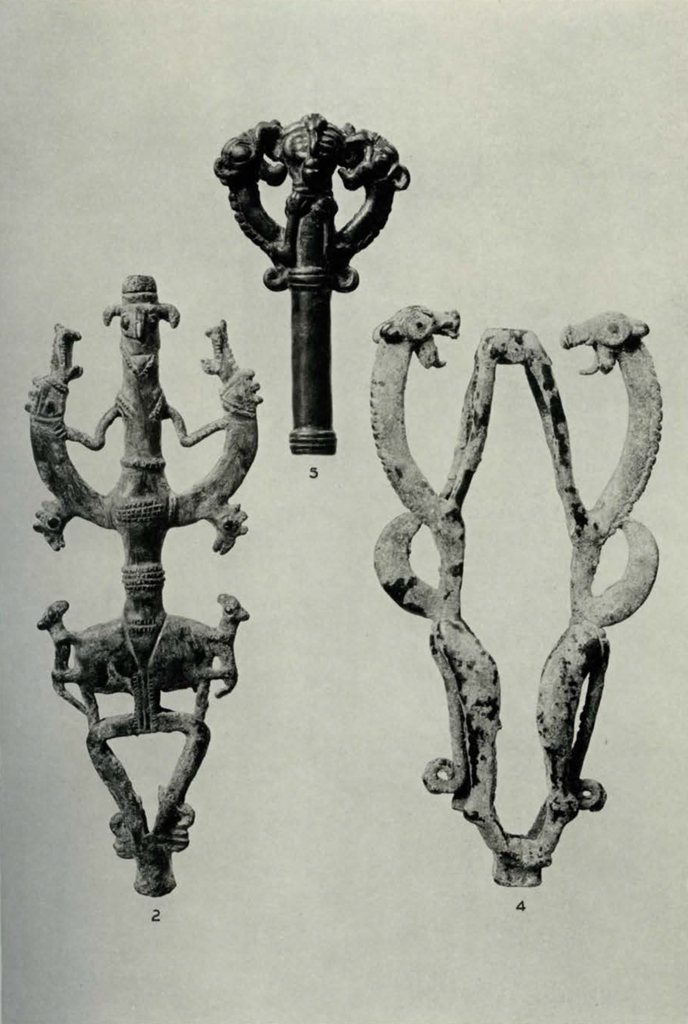
Museum Object Number: 30-38-53 / 30-38-29 / 30-38-52
Image Number: 21525-21428
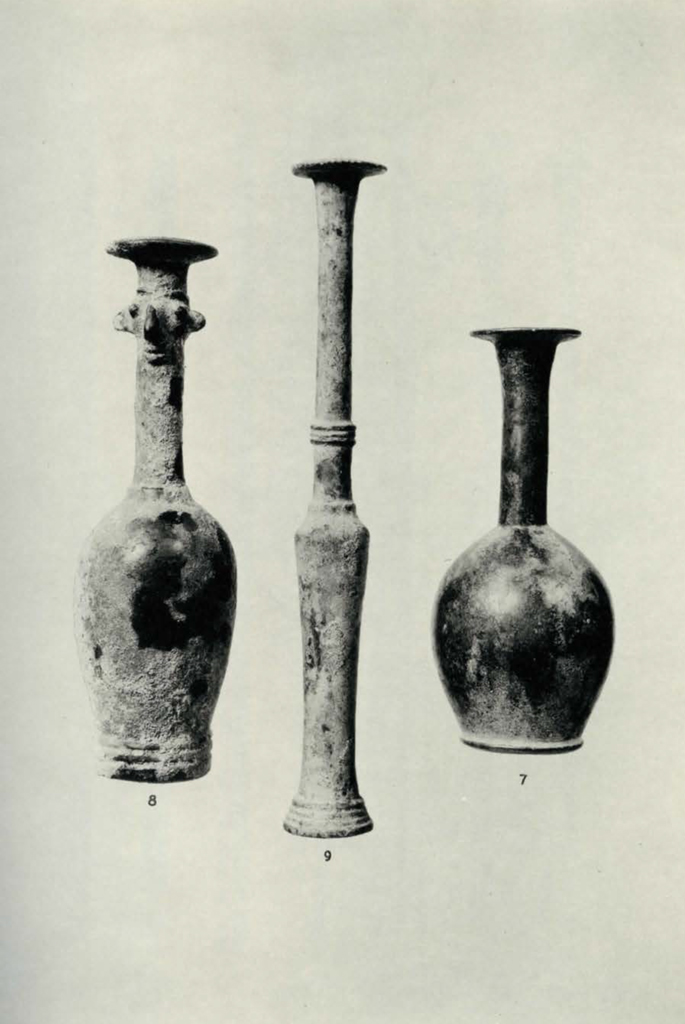
Museum Object Numbers: 30-38-47 / 30-38-34
Image Number: 21543
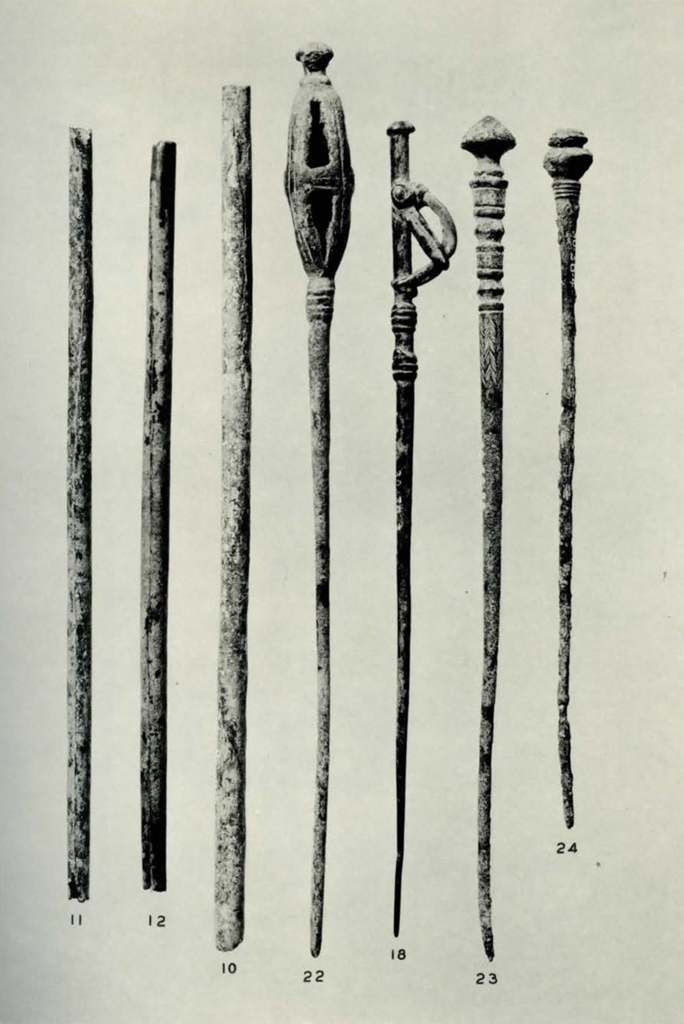
Museum Object Numbers: 30-38-43 / 30-38-60 / 30-38-42 / 30-38-20 / 30-38-3 / 30-38-22 / 30-38-4
Image Number: 21541
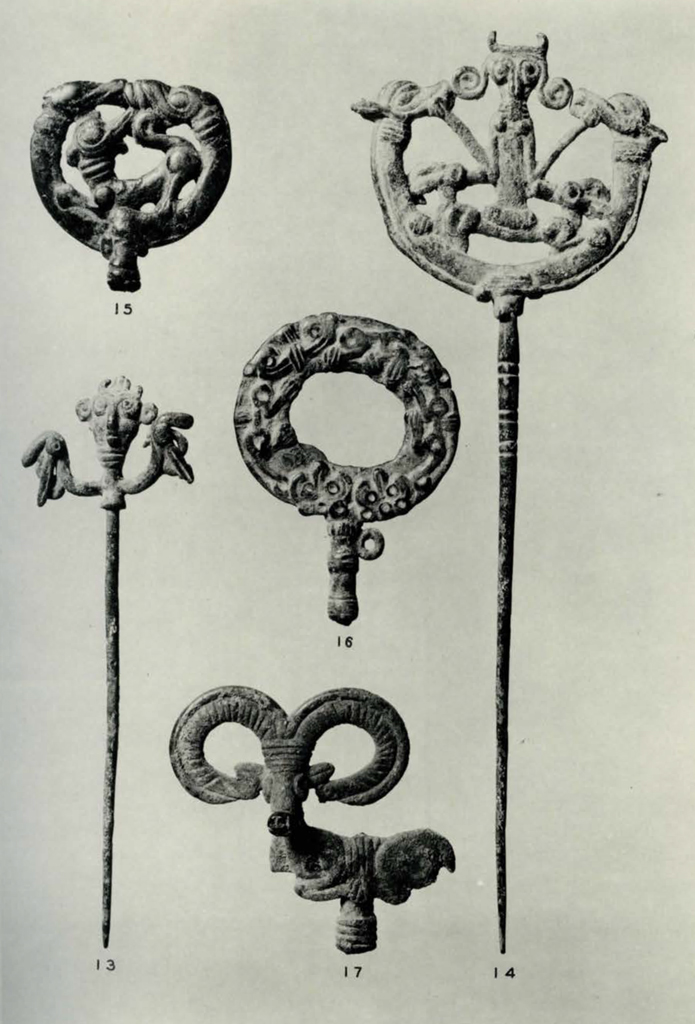
Museum Object Numbers: 30-38-49 / 30-38-50 / 30-38-9 / 30-38-37 / 30-38-8
Image Number: 21540
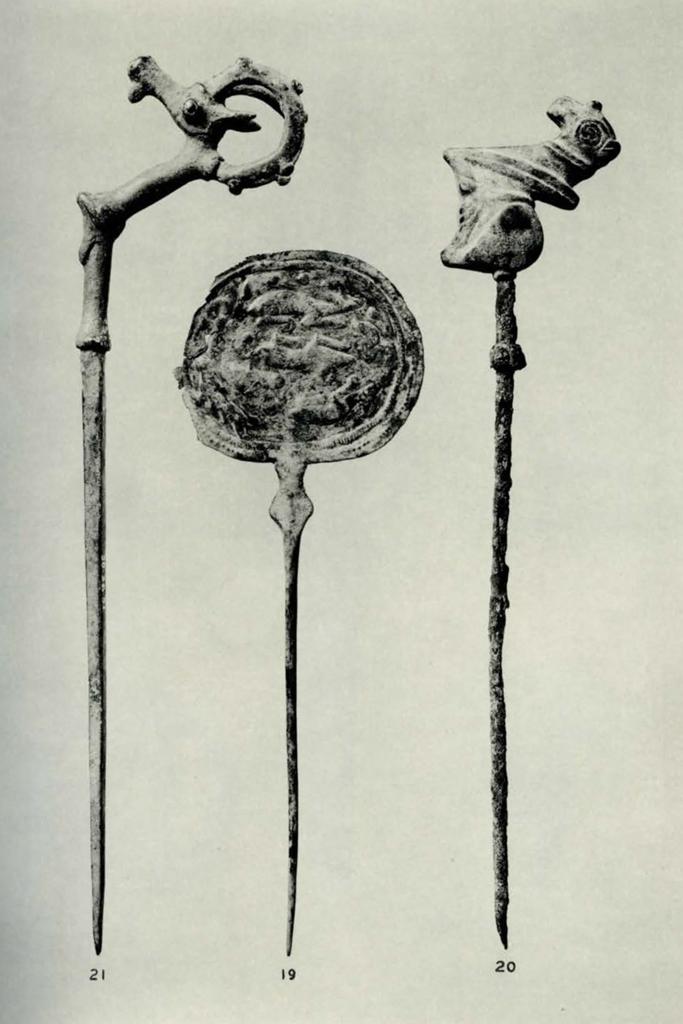
Museum Object Numbers: 30-38-19 / 30-38-21 / 30-38-51
Image Number: 21536
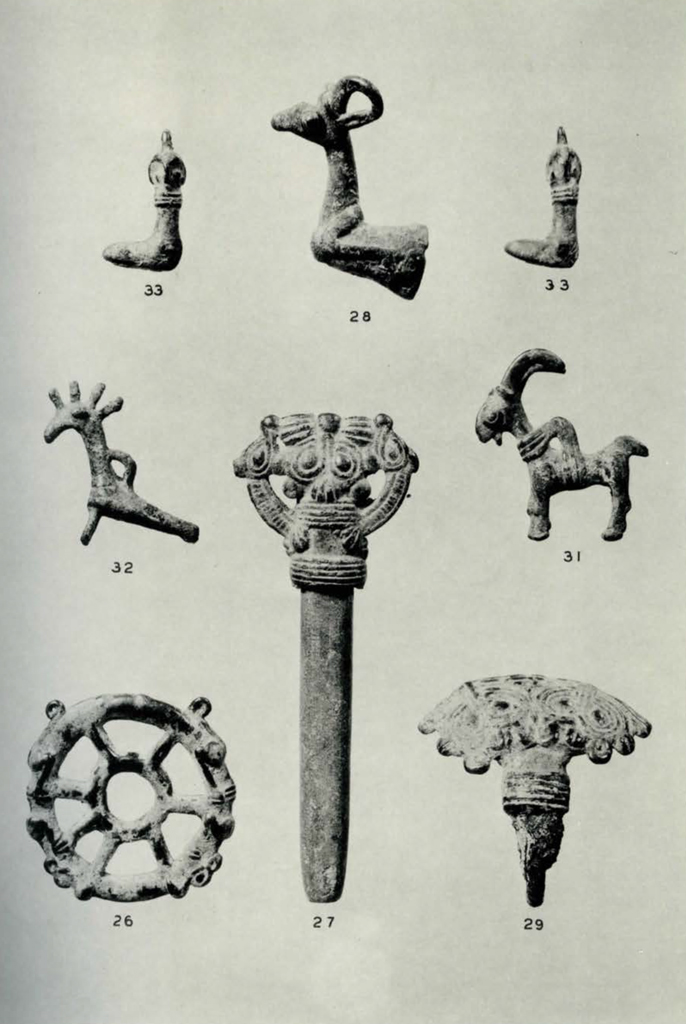
Museum Object Numbers: 30-38-41A / 30-38-41B / 30-38-5 / 30-38-40 / 30-38-30 / 30-38-39 / 30-38-38 / 30-38-10
Image Number: 21581
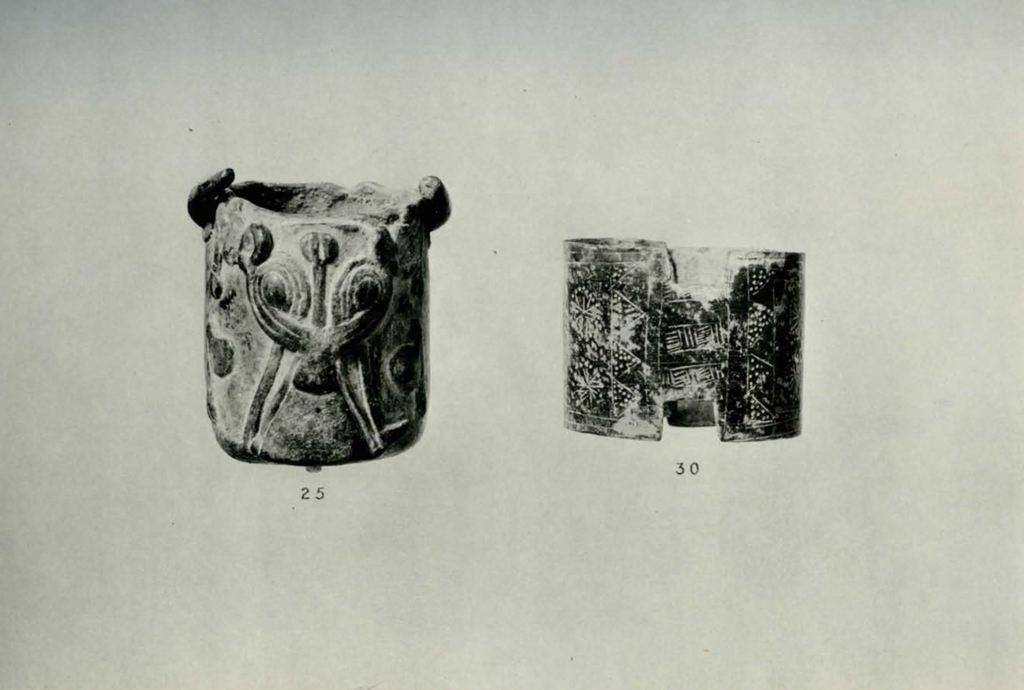
Museum Object Numbers: 30-38-48 / 30-38-26
Image Number: 21545
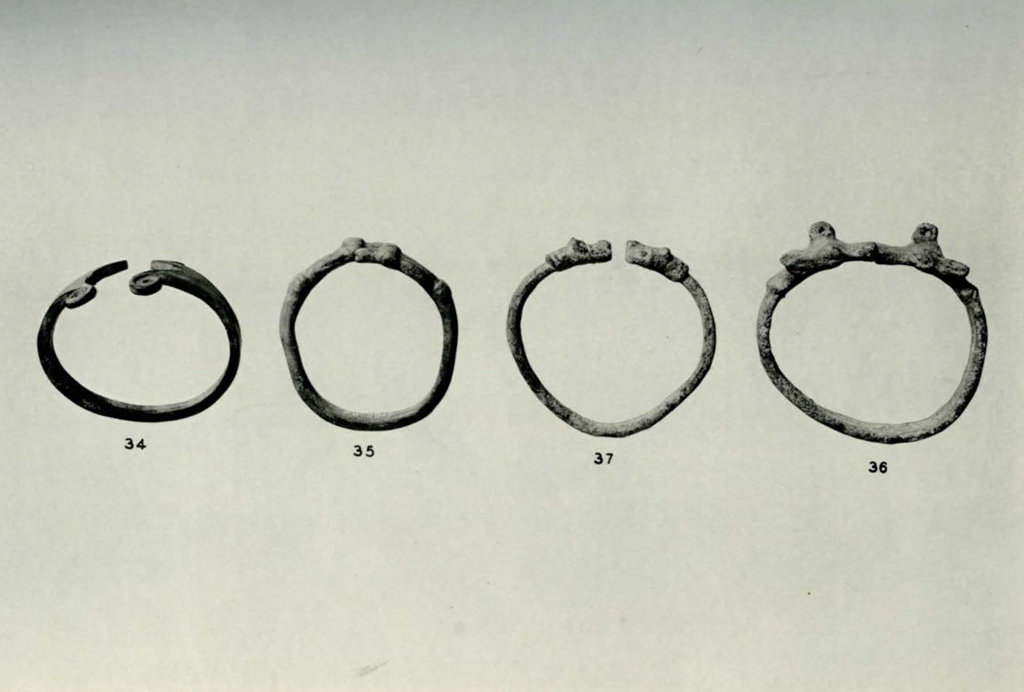
Museum Object Numbers: 30-38-24 / 30-38-7 / 30-38-6 / 30-38-23
Image Number: 21547
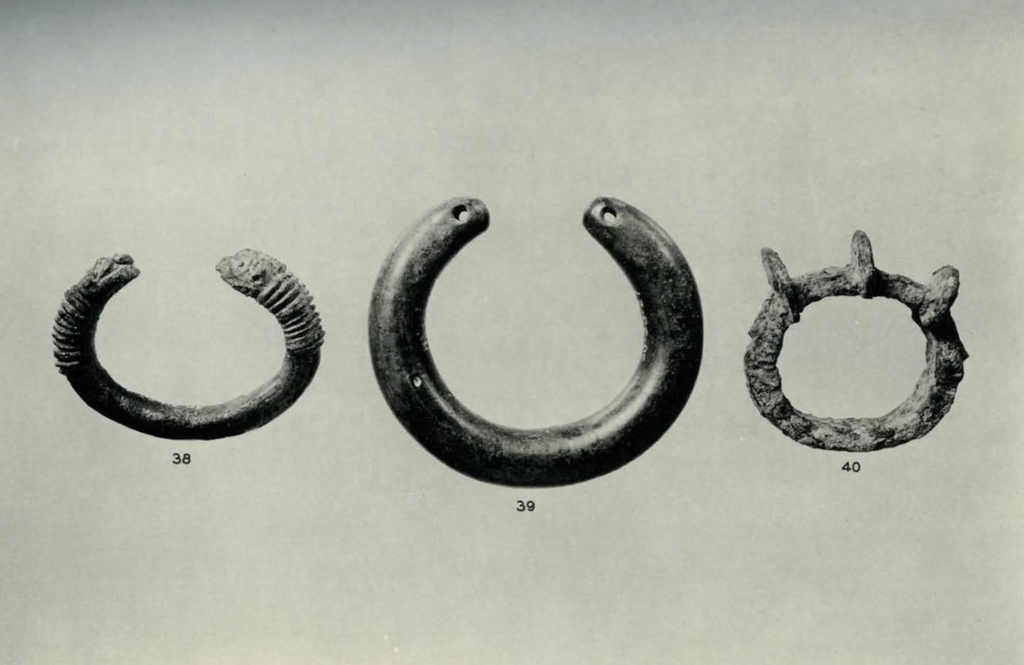
Museum Object Number: 30-38-25 / 30-38-27 / 30-38-28
Image Number: 21548
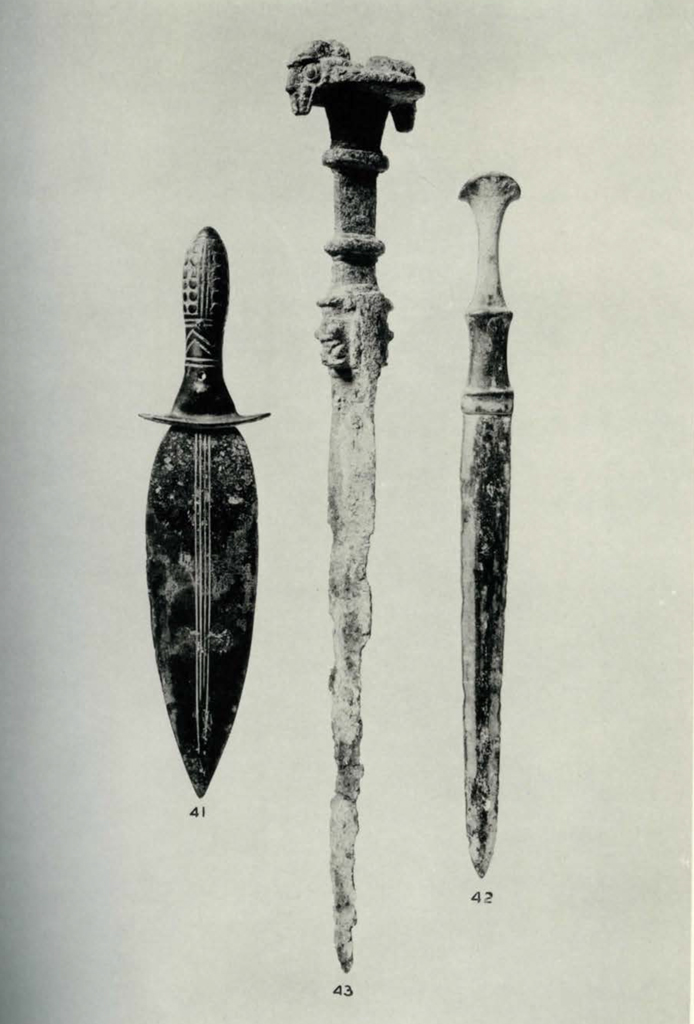
Museum Object Numbers: 30-38-57 / 30-38-18 / 30-38-17
Image Number: 21571
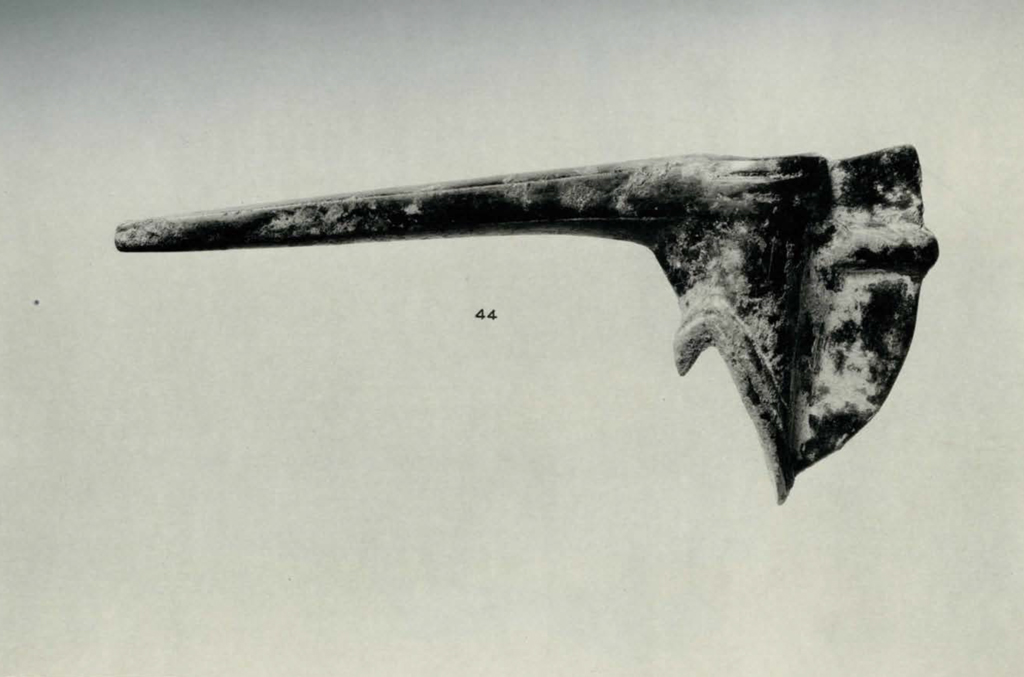
Museum Object Number: 30-38-32
Image Number: 21564
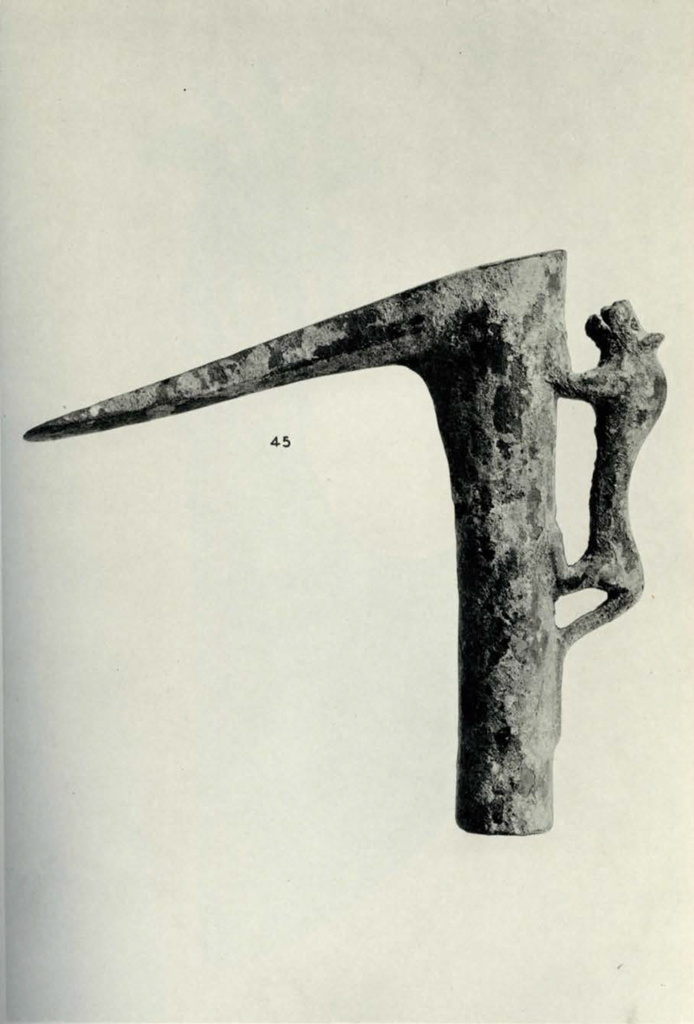
Museum Object Number: 30-38-56
Image Number: 21570
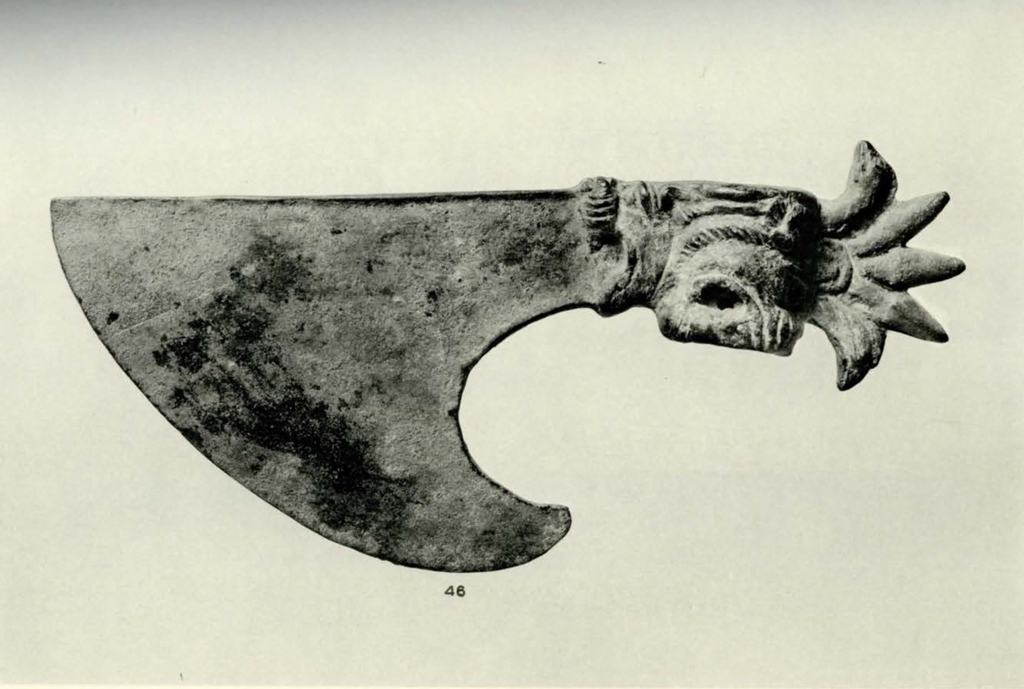
Museum Object Number: 30-38-54
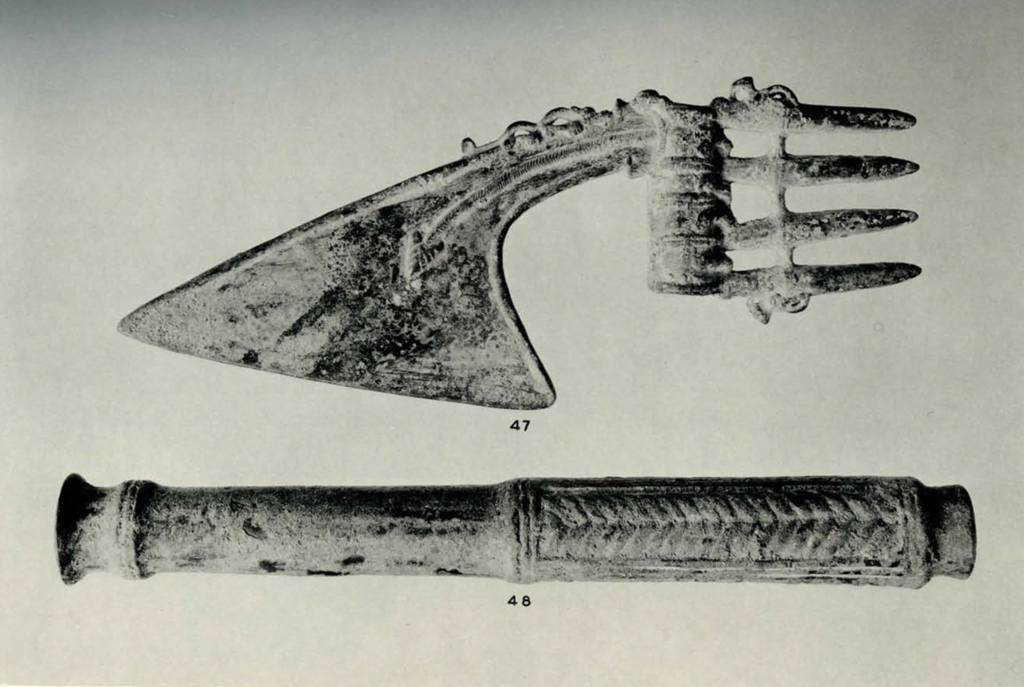
Museum Object Numbers: 30-38-55 / 30-38-35
Image Number: 21561
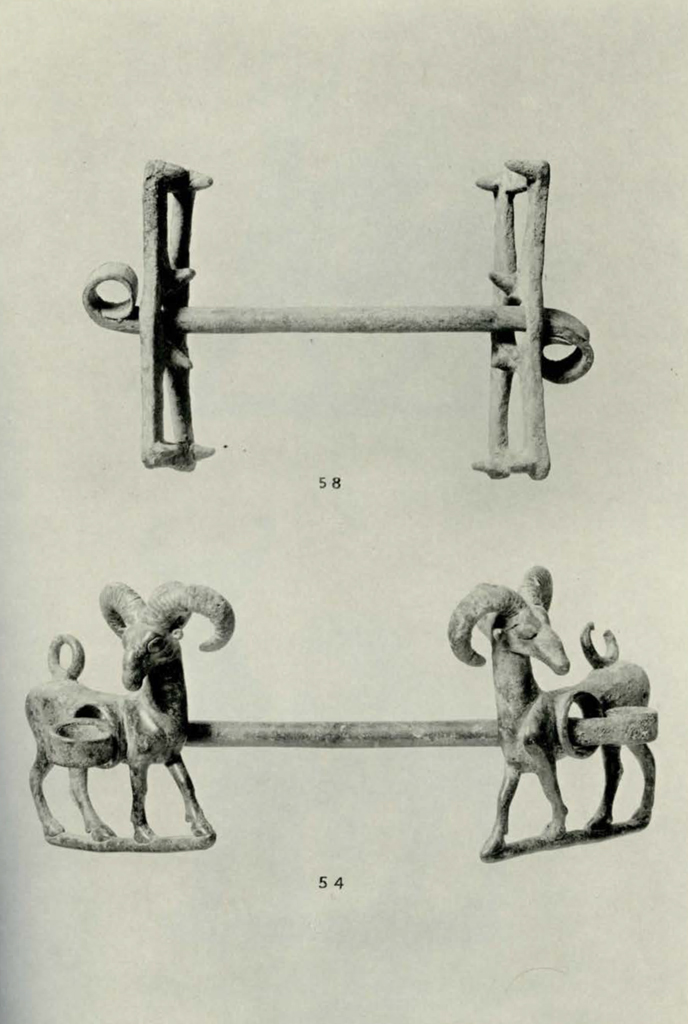
Museum Object Numbers: 30-38-14 / 30-38-44
Image Number: 21499
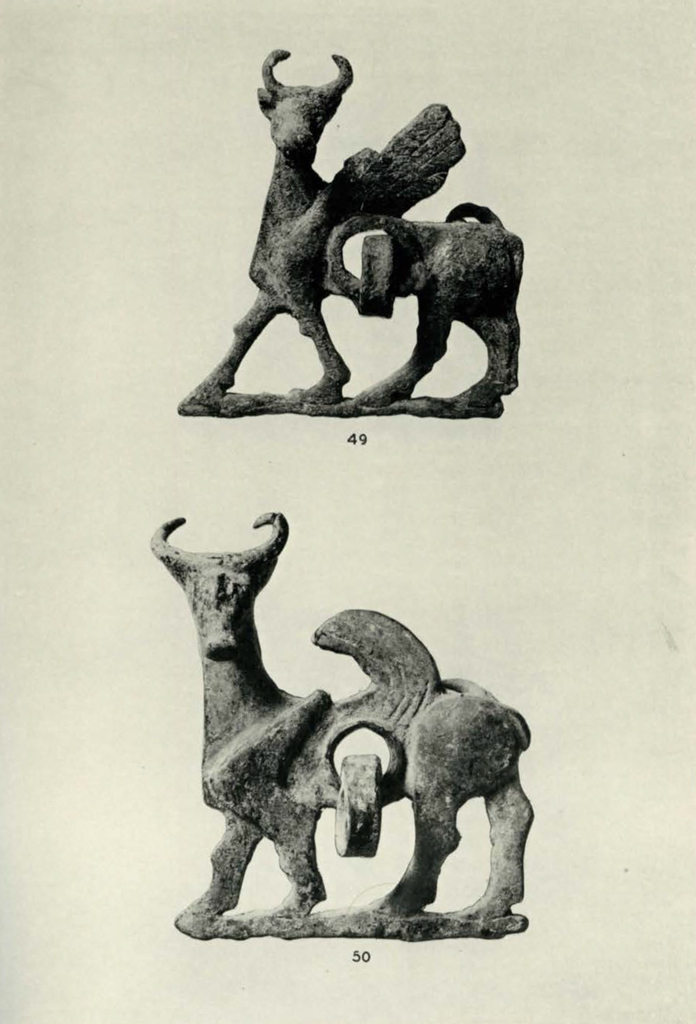
Museum Object Numbers: 30-38-12 / 30-38-13
Image Number: 21493, 21495
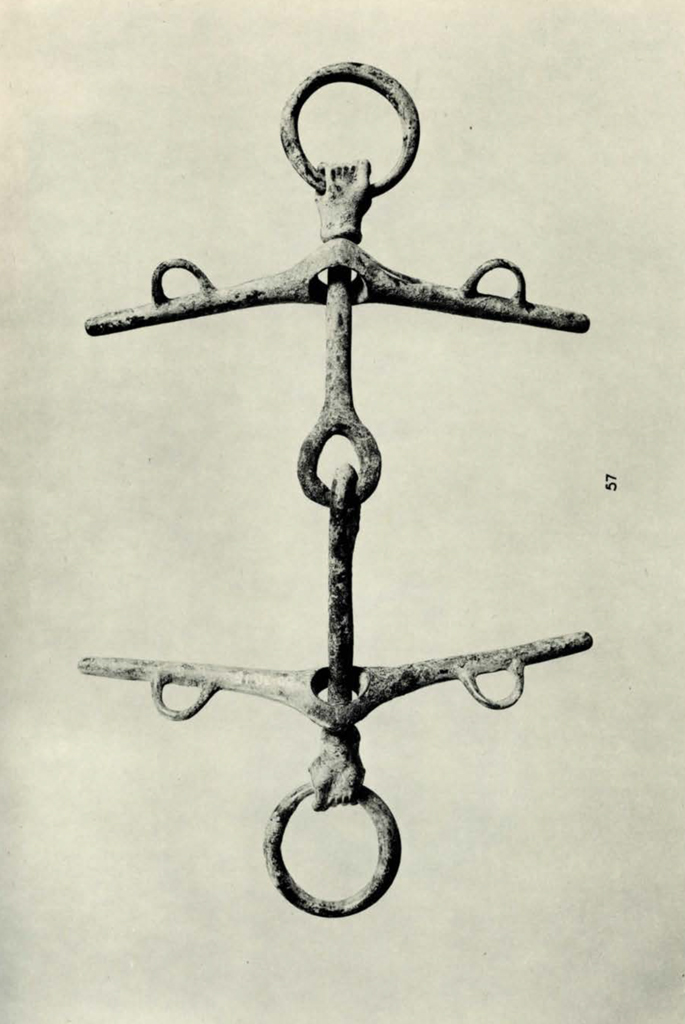
Museum Object Number: 30-38-15
Image Number: 21497
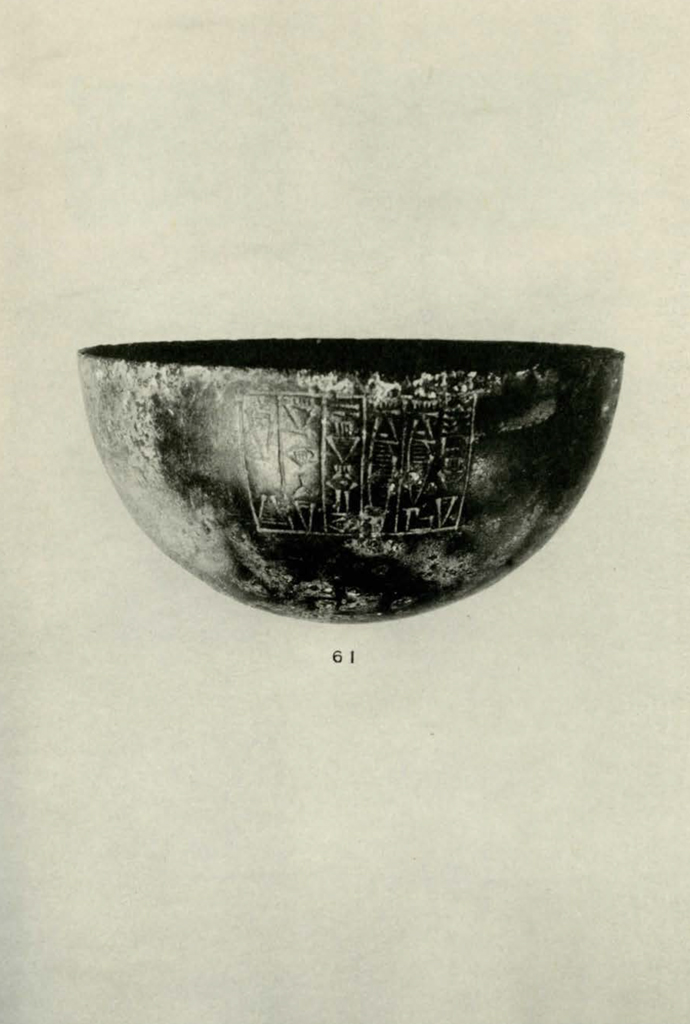
Museum Object Number: 30-38-59
Image Number: 21553
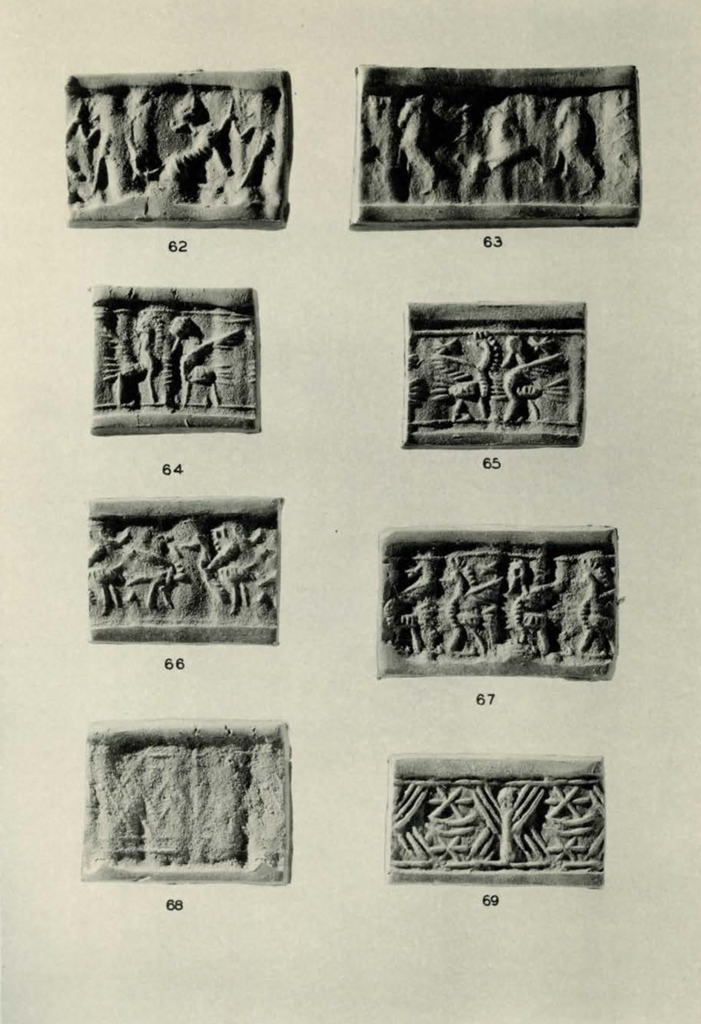
Image Number: 21558
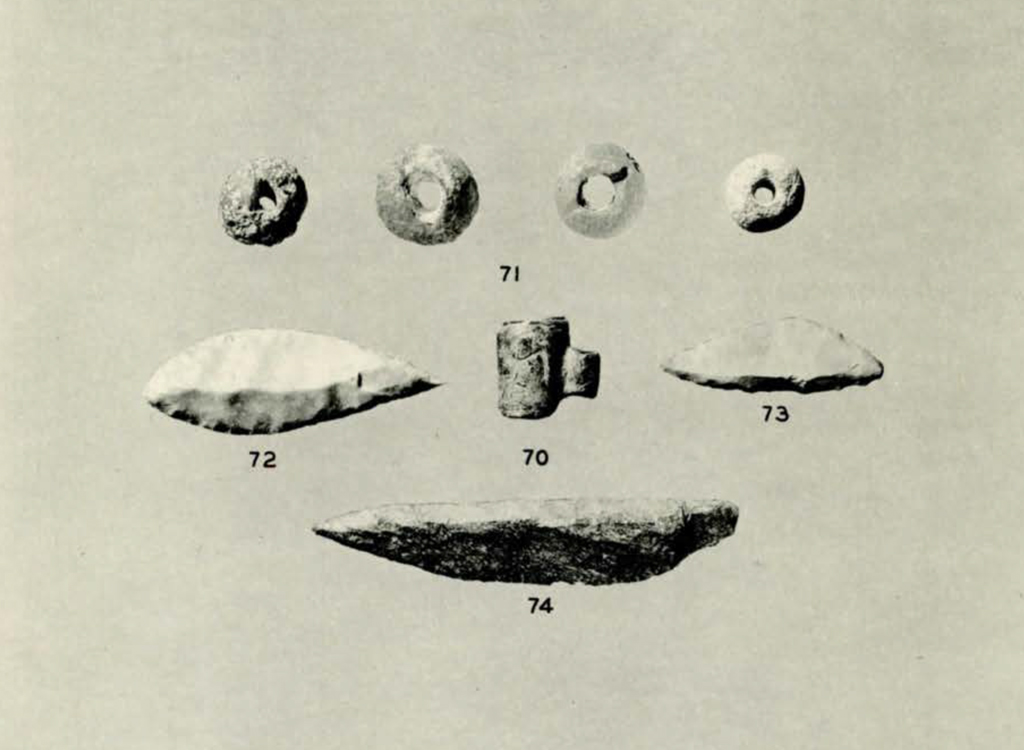
Museum Object Number: 30-38-69 / 30-38-70A / 30-38-71 / 30-38-72 / 30-38-73
Image Number: 21551a, 21551b


